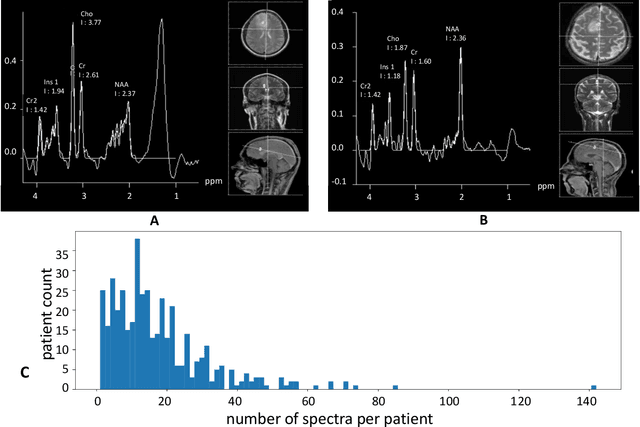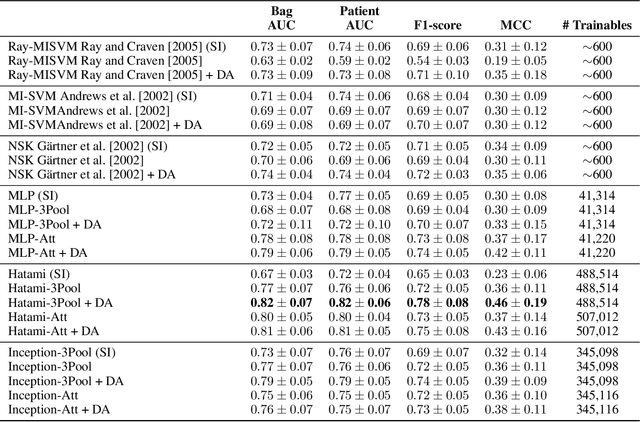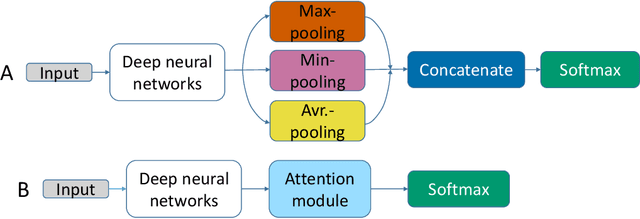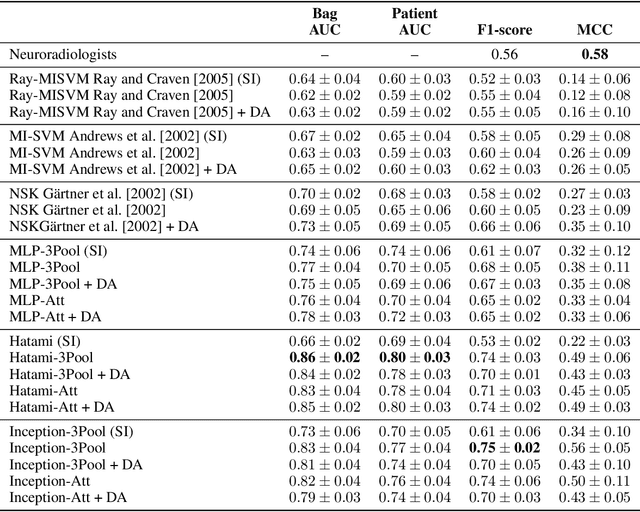Multiple Instance Learning for Brain Tumor Detection from Magnetic Resonance Spectroscopy Data
Paper and Code
Dec 16, 2021



We apply deep learning (DL) on Magnetic resonance spectroscopy (MRS) data for the task of brain tumor detection. Medical applications often suffer from data scarcity and corruption by noise. Both of these problems are prominent in our data set. Furthermore, a varying number of spectra are available for the different patients. We address these issues by considering the task as a multiple instance learning (MIL) problem. Specifically, we aggregate multiple spectra from the same patient into a "bag" for classification and apply data augmentation techniques. To achieve the permutation invariance during the process of bagging, we proposed two approaches: (1) to apply min-, max-, and average-pooling on the features of all samples in one bag and (2) to apply an attention mechanism. We tested these two approaches on multiple neural network architectures. We demonstrate that classification performance is significantly improved when training on multiple instances rather than single spectra. We propose a simple oversampling data augmentation method and show that it could further improve the performance. Finally, we demonstrate that our proposed model outperforms manual classification by neuroradiologists according to most performance metrics.
 Add to Chrome
Add to Chrome Add to Firefox
Add to Firefox Add to Edge
Add to Edge